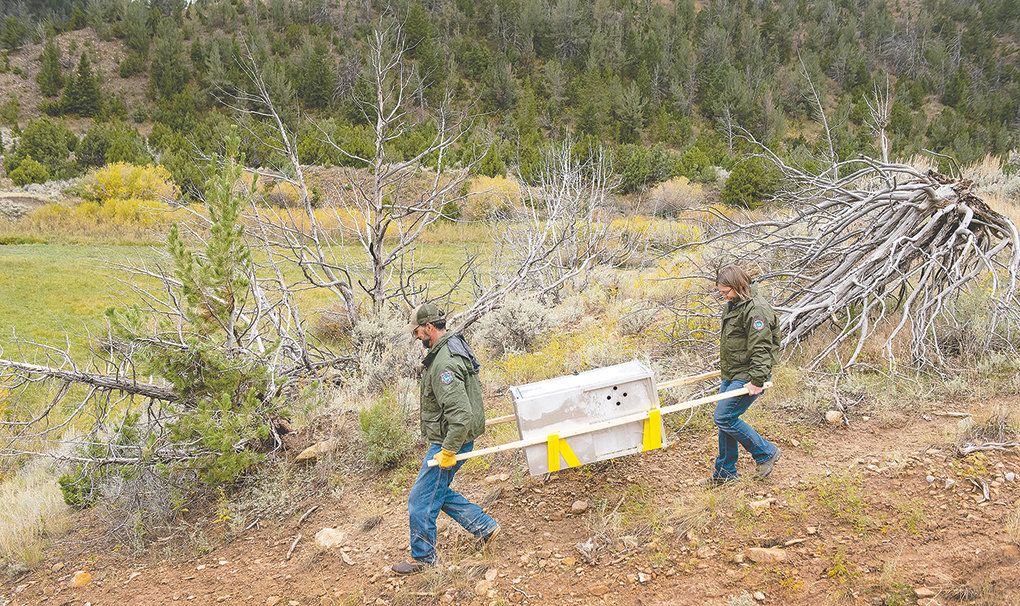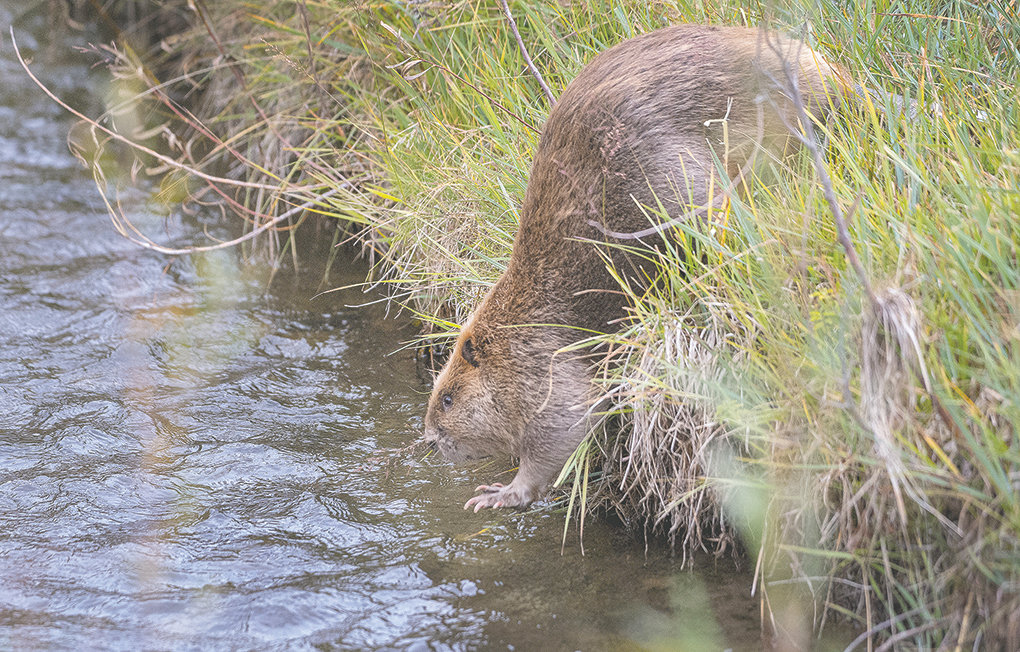Now we all know Ben Goldfarb is a great writer. But did we know he writes fiction? Apparently it’s his second love and we can all look forward to new offerings soon! A tail of two beavers. Great Beaver Expectations. The Brother’s Beavermozov. The case of the tail that never slapped. I could go on.
The Wild Writing of Ben Goldfarb
For Ben Goldfarb, a map of North America looks very different depending on where the beavers are allowed to live. The nature journalist’s 2018 nonfiction book Eager: The Surprising Secret Life of Beavers and Why They Matter charts the rise, fall, and other rise of this engineering animal, which helped shape the continent — both by its presence and its absence.
The story of the beaver isn’t the only one Goldfarb is adept at telling. He’s a featured author at this year’s Bedtime Stories Spokane, with novelists Sharma Shields and Jess Walter, reading new fiction. His next book project is more wildlife journalism, though — about the effect of human-made roads on the natural world.
 Bedtime for beaver stories! I honestly can’t wait. I can see Ben as kind of a Norman Mailer of fiction. Ruggedly standing to one side and watching the story unfold. Even if it’s one of his own making.
Bedtime for beaver stories! I honestly can’t wait. I can see Ben as kind of a Norman Mailer of fiction. Ruggedly standing to one side and watching the story unfold. Even if it’s one of his own making.
Humanities Washington: Did essays and nonfiction come first for you, or fiction?
Ben Goldfarb: Before I became a journalist, my dream was really to be a professional conservationist. After college, I had a number of fieldwork jobs — I worked for the National Park Service in Yellowstone doing invasive trout control, I worked for the New York City Parks Department, I tagged sea turtles in North Carolina. I really envisioned going to work for some large conservation nonprofit. But the whole time I was doing those jobs, I was blogging, doing a little bit of freelancing, and always loved to write. While I was in graduate school I started writing for campus publications, and realized I really loved writing more than anything else. And going into nonfiction was a way to tackle those issues that were really close to my heart.
Okay. You can write about road ecology if you must. But I’m going to imagine you penning a fine tail about a brave city deciding to live with beavers against incredible odds and the wonderful cast of wildlife characters it grew because of it. Ahh.
Humanities Washington: You’ve moved into studying the effects of roads on ecosystems. What have you found?
Ben Goldfarb: I think the thing that’s been striking for me, and the reason the next book is going to be a really rich, interesting and maybe challenging one to write, is the diversity of the impacts that roads have. We drive around and everybody sees the roadkill deer or possum by the side of the highway, but what you don’t see is that road acting as a barrier to movement for wildlife. Our vast road network really fragments landscapes and cuts off migration, and cuts off animals from accessing the habitat they need to find food and mates and rearing ground for juveniles. You can’t see that, but it’s very real, and in its own way more destructive than roadkill. We also tend to build roads along riverways, and we’ve cut off a lot of rivers from their floodplain. You’ve got stormwater runoff from all this impervious surface we’ve created. You’ve got roads functioning as corridors for invasive species introduction and movement. For me, the story of beavers is the story of this animal that shaped North America in ways that we fail to recognize, and the elimination of beavers profoundly changed North American landscapes as well. I think that roads are similar.


 There are many benefits having beavers doing what they do best. When water is slowed, sediment drops out, increasing the water quality. And when the water level rises, so does the water table surrounding a creek, enabling vegetation to grow. Expanding the wetland area around the creek “is the biggest benefit for terrestrial wildlife,” Altermatt said.
There are many benefits having beavers doing what they do best. When water is slowed, sediment drops out, increasing the water quality. And when the water level rises, so does the water table surrounding a creek, enabling vegetation to grow. Expanding the wetland area around the creek “is the biggest benefit for terrestrial wildlife,” Altermatt said.
 Now I just have to figure out how to hang them! Fro is such an amazing combination of talent,
Now I just have to figure out how to hang them! Fro is such an amazing combination of talent,
 patience and vision. She made sure every child’s work stayed true, and still managed to turn the whole thing into a masterpiece. Rumor is she might be joining us again for Earth day, when we start the amazing prayer flags that hopefully can hang at the festival. Something like this, only much much cooler.
patience and vision. She made sure every child’s work stayed true, and still managed to turn the whole thing into a masterpiece. Rumor is she might be joining us again for Earth day, when we start the amazing prayer flags that hopefully can hang at the festival. Something like this, only much much cooler. A beaver has been filmed living on Loch Lomond for the first time after embarking on a cross-country trek. But the animal’s solo relocation, hailed by experts as a big step in the development of Scotland’s wild beaver population, could mean a lonely life.
A beaver has been filmed living on Loch Lomond for the first time after embarking on a cross-country trek. But the animal’s solo relocation, hailed by experts as a big step in the development of Scotland’s wild beaver population, could mean a lonely life.


 Yesterday was an odd flurry of fortuitous. It started when Amy Hall (the chalk artist at the festival) asked about a pdf on beavers that she could direct folks on her website towards. Seems she and her husband are doing a yoga class for thanksgiving and she wanted to ask for donations for beavers and educate attendees about their importance.
Yesterday was an odd flurry of fortuitous. It started when Amy Hall (the chalk artist at the festival) asked about a pdf on beavers that she could direct folks on her website towards. Seems she and her husband are doing a yoga class for thanksgiving and she wanted to ask for donations for beavers and educate attendees about their importance.






































